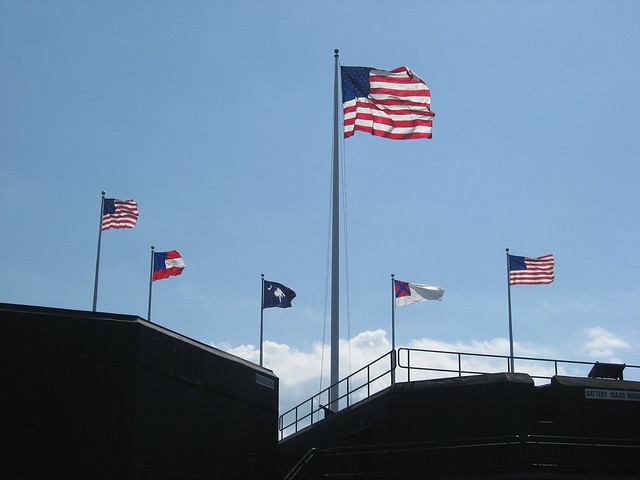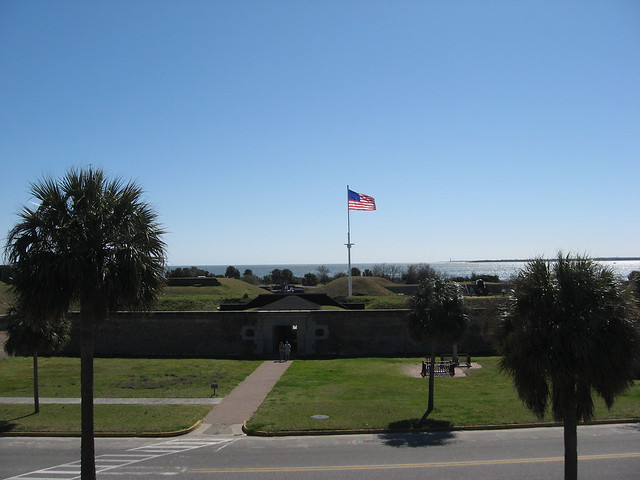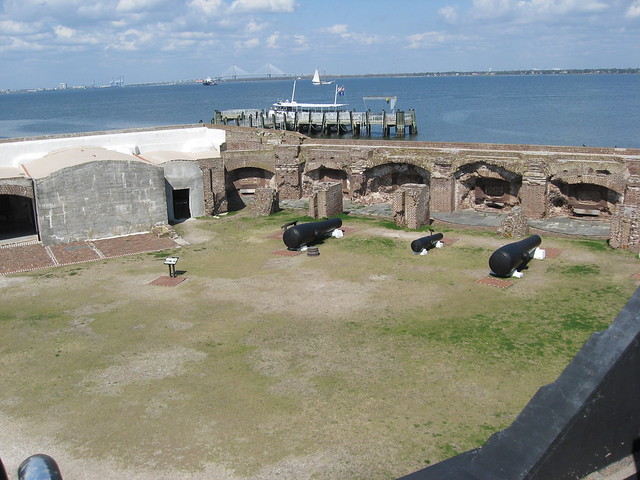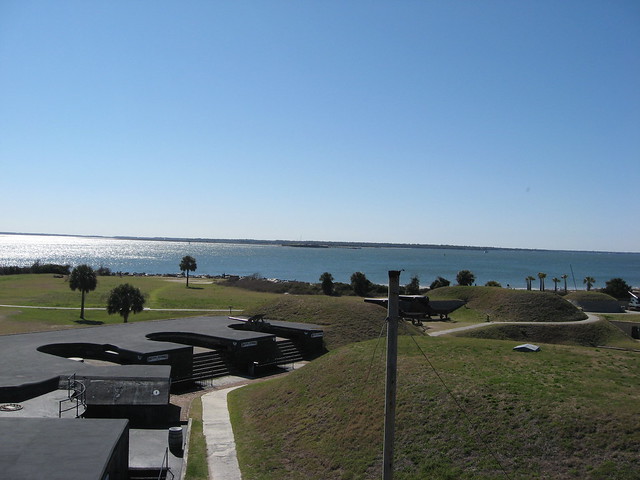
Location: Fort Sumter itself is located in Charleston Harbor, Charleston, SC. Fort Moultrie is located on Sullivan's Island, SC.
Introduction:
This post will be a special post because this is one of the many sites in the National Park System that preserves history of the American Civil War. This site is where the war began! I will admit I haven't been there since 2008 so it has been a while but this post needed to be done today because it marks the 150th anniversary of the start of the Civil War. I am not going to go into too much depth on the history that led to the start of this war because while I may enjoy learning about that time there are much smarter people than I out there that can handle that this post won't be too much unlike the ones that preceded it in this series.
Fort Sumnter National Monument actually contains within it two forts; Fort Sumter itself (Wikipedia Page) and Fort Moultrie (Wikipedia Page). It contains both of these forts because Fort Moultrie is where many of the early shots of the Civil War that fell on Fort Sumter were fired from Fort Moultrie. While you need to take a boat out to Fort Sumter, there are a couple of places around Charleston to pick one up, Fort Moultrie is just a short drive from downtown Charleston and sits on a beautiful portion of beach that overlooks the harbor. When you stand on these forts you can see why they were chosen they both overlook a good portion of Charleston Harbor and would be great places to mount a defense of the harbor. I really enjoyed my visit to these two sites and if you are interested in American history these are a must see as Fort Moultrie was an active fort till just after WWII
Geology:
The geology of the two forts itself is pretty simple, they sit on modern beach deposits formed from sand and in a few places rocks. The City of Charleston itself is primarily a deltaic system so consists of fine grained sediments that have been laid down as the two rivers that from the harbor flooded in the past. This basic geology gives me a chance to talk briefly about the coastal plain of the U.S. east coast, called the Atlantic Plain. The coastal plain in the US starts at the fall line and is primarily associated with, on the east coast, metamorphic rocks to the west and the coastal plain sedimentary rocks to the east. These rocks were laid down slowly as the ocean receded and is the reason why whale fossils can be found just outside of Richmond, VA. These rocks had been cut when the rivers where the lowest during the last glacial maxima but are now flooded, except for the Mississippi River, up to the fall line due to the increase in sea level with the melting of the glaciers. It is an interesting situation but not an overly complex geologic structure.
More Images: I have even more in the Fort Sumter portion of my Flickr page.




Further Reading:
Ok I don't have anything else to read as far as the geology goes but check out the NPS website on the sites to learn more about the history as well as many untold books on the Civil War itself.
National Park Service Series homepage

No comments:
Post a Comment